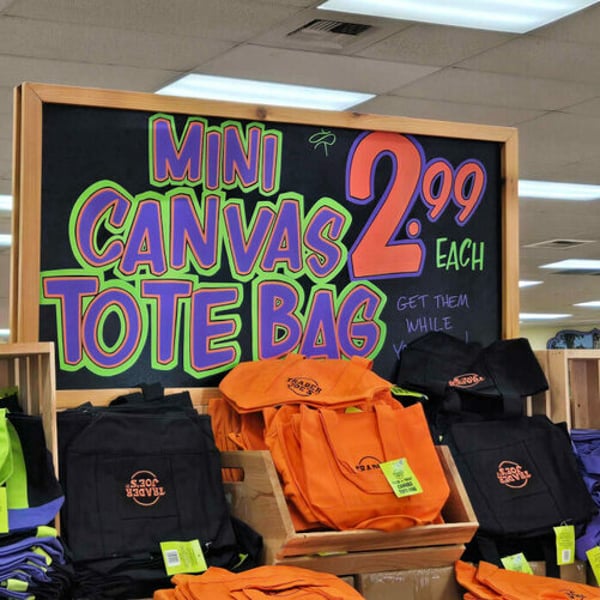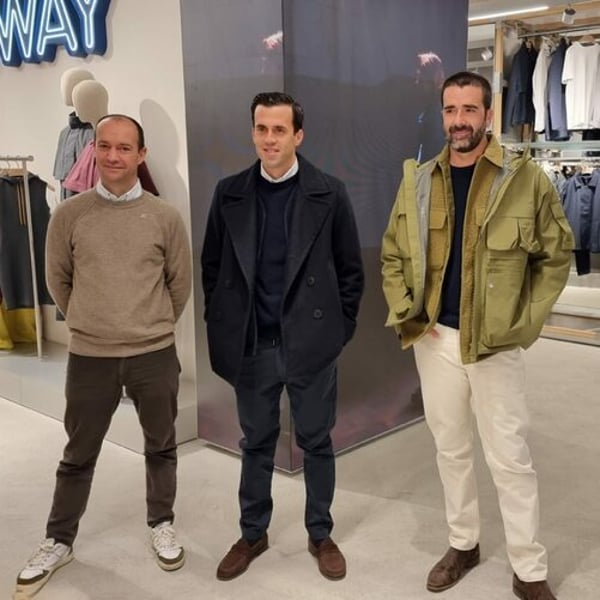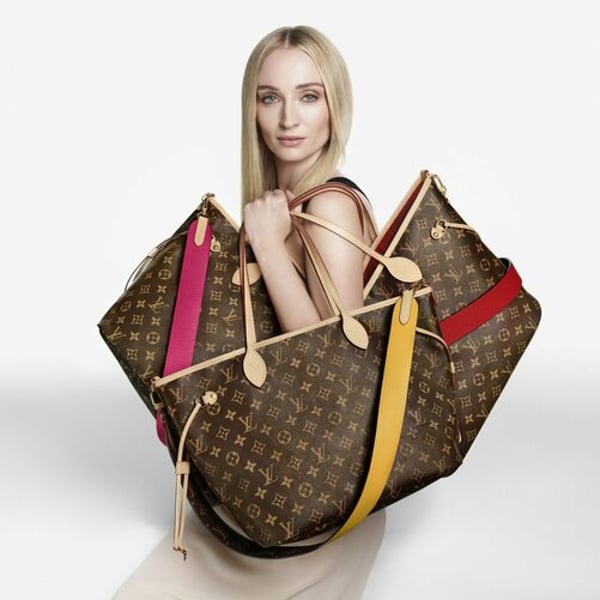By
Bloomberg
Published
November 5, 2025
On an October afternoon, a delivery of new bags arriving at a store in midtown Manhattan was driving fashionistas wild. But it wasn’t fresh supplies of Hermes SCA’s Birkin, Chanel’s 25, or even The Row’s Margaux. The bag in question cost $2.99 and is sold by grocery store Trader Joe’s.

The chain’s mini-totes- available in Halloween colours and restricted to four per customer- take a page from the book of luxury retailers, which have long known that scarcity stokes demand and limited drops create excitement.
But it’s also true that luxury brands, which have recently alienated many younger, affluent shoppers with eye-watering price increases, could learn something from Trader Joe’s. The TJ bags (both the new mini-totes and the original cream, navy and red shopper costing $3.99) are what you might call a subtle flex; they manage to signify status and mark those who carry them as in-the-know- while also offering a sense of fun and accessibility. Few luxury houses are able to walk that line, despite the potential rewards.
In the US, where the brand is based, Trader Joe’s has acquired something like cult status. Founded in 1967 by Joseph Coulomb, the store, with its friendly staff and quirky Hawaiian-style décor, is known for its unique and affordable products, such as Everything But the Bagel Sesame Seasoning Blend. The brand has only about 600 stores in the US, most of which are in or around cities, (compare that with the country’s roughly 4,600 Walmart Inc. locations). It doesn’t sell online and its notoriously long checkout lines often stretch throughout the store.
For American shoppers, carrying a Trader Joe’s bag might signal a kind of urban sophistication- that you’re clued-in and discerning, with the time and taste to shop for your Speculoos Cookie Butter and fancy yet cheap cheeses in person.
And if there’s a performative element to carrying the bags in the US, it’s multiplied when the user is piling their groceries into one in Europe, Japan, or South Korea. Indeed, the brand’s canvas shoppers are getting more popular abroad; there is no anti-Americanism when it comes to Trader Joes, apparently.
Because the company has no stores outside of the US, toting one abroad suggests you have the means to travel internationally- or at least the savvy to pick one up on a resale site. It also amplifies the bag’s IYKYK (that’s if-you-know-you-know, for those who aren’t fluent in internet speak) status, which has been amplified by influencers on Instagram and TikTok. That’s allowed the bags to claim a place typically occupied by luxury items, which once has a chokehold on this type of signalling.
So, how can luxury reclaim the ground now occupied by the likes of Trader Joe’s bags?
Finding the formula for lasting desirability and virality is like “unlocking the secret to eternal youth,” Oliver Chen, analyst at TD Cowen told me. But there are some clues as to how top-end brands might crack the code.
Firstly, you must offer some items that are relatively affordable. Accessories like bag charms, which have helped Tapestry Inc.’s Coach connect with Gen-Z customers, fit the bill, as do Prada SpA hair scrunchies. Beauty and fragrance products can also work.
Secondly, there must be an element of experience- and bonus points if it’s something you can post on your social feeds to let your followers know you’re part of the in crowd. This isn’t about fashion brands carefully curating their own Instagram posts. Rather, it’s about creating something customers can’t wait to see and do, and providing physical environments designed for photos and sharing.
Food is particularly promising. That explains why so many luxury brands, from Coach to Cie Financiere Richemont’s Alaia, are introducing restaurants or cafes. The model is Ralph Lauren Corp.’s Ralph’s Coffee, which has opened in about 40 locations around the world since its creation in 2014. In addition to providing the background for an uncountable number of TikToks, Ralph’s also sells merch, including, yes, totes, as well as reusable mugs and baseball caps. Carrying, say, the brand’s green-and-white tumbler gives off some of insider vibe you might get with a Trader Joe’s bag.
Events and quirky stores can play a similar role. Louis Vuitton opened a series of pop-ups around the world earlier this year to promote the reissue of its collaboration with Japanese artist Takashi Murakami. Locations were brimming with selfie-spots and short-films capturing the colour and style of Murakami’s work, while attendees could buy LV-logoed drinks and cakes. Those purchasing from the collection were issued a token, which could be inserted into a vending machine to win branded novelty prizes.
The Louis, a store in the shape of a ship in Shanghai, and Louis Vuitton’s flagship store in New York City, which is temporarily covered in an installation of monogrammed trunks, have become surprise tourist attractions. Creating that level of spectacle required LVMH’s considerable resources, which certainly help when it comes to capturing the public’s attention. That said, even the world’s biggest luxury group can’t always buy its way to virality: LV’s beautifully packaged beauty products should have been TikTok sensations, but with lipsticks priced at $160 a pop, they failed to take algorithmic flight.
As for Trader Joe’s, it’s hard to say how long its affordable totes will retain their exclusive status. If I had to put my bet on what might displace them, I’d go with Erewhon, the California grocer best known for its exorbitantly priced smoothies, which is opening its first New York location in a private members club in Manhattan. Though with a reported $36,000 joiners fee, plus $7,000 in annual dues, flexing with an Erewhon bag is more steroidal than subtle.







